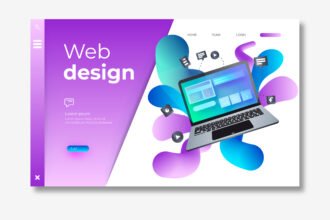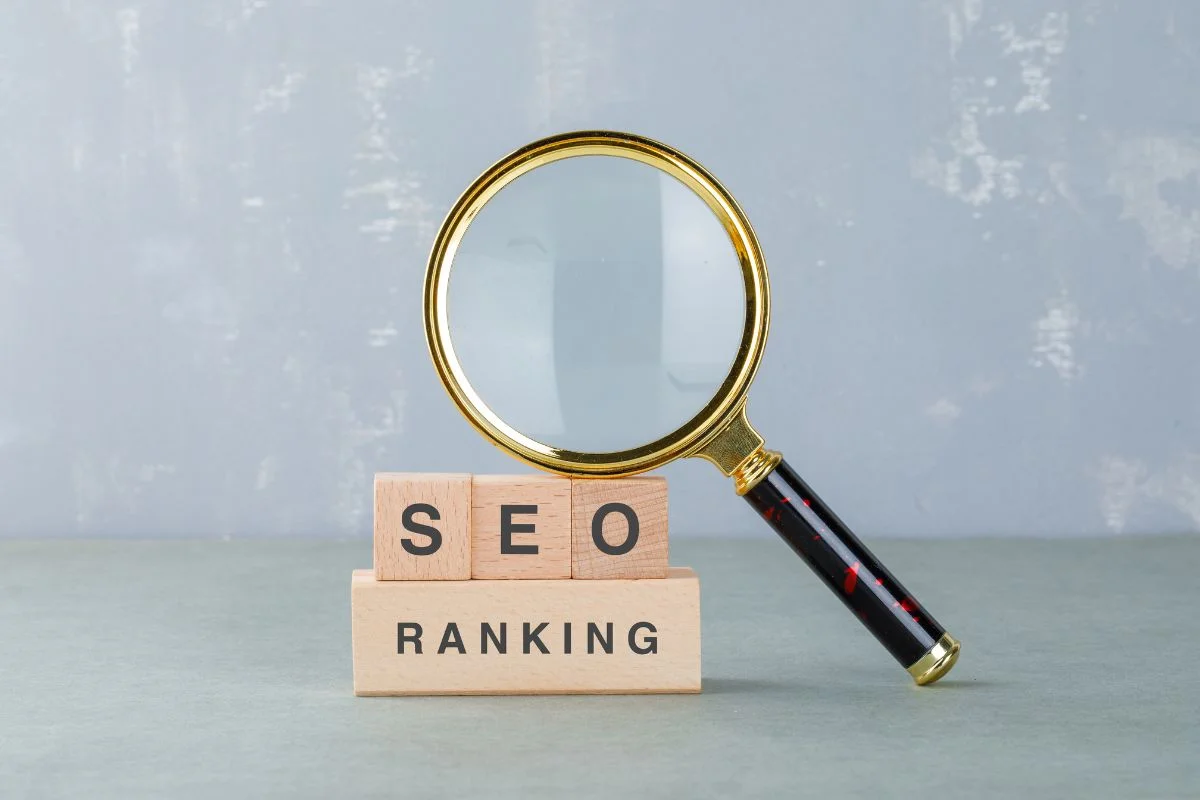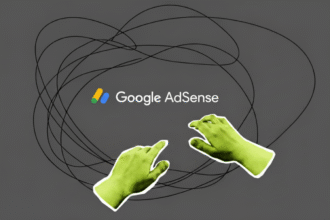When I launched SYNAPSE MARKETING, my first digital marketing blog with high hopes and ambitious goals. After three months of publishing what I thought was quality content, I was getting less than 50 visitors per month. I kept asking the question, “What is SEO?” As most people keep letting me know, I need to work on my SEO, and whether it could really make a difference for my struggling website.
Then I decided to learn search engine optimization properly. I invested time studying ranking factors, keyword research, and content strategies. Within six months of implementing SEO strategies, the organic traffic exploded to 15,000 monthly visitors without spending a dime on paid advertising. Our revenue from Google AdSense increased by 340%, and I started receiving partnership requests from brands in my industry.
This dramatic transformation isn’t unique to my story. According to recent data, 68% of online experiences begin with a search engine, and 53.3% of all website traffic comes from organic search. If you’re a business owner, marketing executive, or entrepreneur wondering “What is SEO?” and how search engine optimization can transform your online presence, this comprehensive guide will walk you through everything you need to know.
What is SEO? Simply put, SEO (search engine optimization) is the practice of improving your website’s visibility in organic search results on platforms like Google, Bing, and Yahoo. But there’s much more to understanding what SEO is and how it drives sustainable business growth in 2025.
What is SEO? Understanding Search Engine Optimization
What is SEO? SEO stands for Search Engine Optimization – the strategic process of optimizing your website to rank higher in organic search results. Understanding what SEO is begins with recognizing how search engines work and what they value.
Google processes over 8.5 billion searches daily, and 92.58% of global search traffic flows through Google search. When you type a query into a search engine, complex algorithms analyze billions of web pages to deliver the most relevant results. What is SEO in this context? It’s the practice of aligning your website content, technical structure, and online authority with what search engines consider valuable and relevant.
The primary goal of SEO is to rank on the first page of search engine results pages (SERPs) for keywords relevant to your business. Why does this matter? Because 75% of users never scroll past the first page of search results, and the first organic result gets clicked 10 times more than the 10th position.
From my experience managing multiple websites, I’ve seen firsthand that rankings directly correlate with traffic volume. When one of my blog posts moved from position 8 to position 3 for a competitive keyword, traffic to that single page increased by 487% in just two weeks. The conversion rate also improved because higher rankings signal credibility to users.
What is SEO’s impact on business? SEO drives 1,000%+ more traffic than organic social media and has a 14.6% close rate compared to 1.7% for outbound marketing. For business owners and marketing executives, understanding what SEO is and implementing it correctly can be the difference between online obscurity and market leadership.
E-E-A-T (Experience, Expertise, Authoritativeness, Trustworthiness) forms the foundation of modern SEO. Google’s algorithms prioritize content that demonstrates genuine expertise and provides value to users. This means creating content based on real experience, not just keyword research. I learned this the hard way when several of my early articles failed to rank despite perfect keyword optimization – they lacked the depth and authenticity that search engines now reward.
Why SEO is Critical for Business Growth
If you’re still wondering what is SEO and why it matters for your business, consider these compelling statistics I’ve gathered from working with clients across various industries.
SEO delivers exceptional ROI compared to other marketing channels. Businesses achieve an average ROI of 39.8% in the third year for new sites, and 61% of B2B marketers state that SEO generates more leads than any other marketing initiative. Additionally, 70% of online marketers prefer SEO over PPC advertising for generating sales.
I’ve personally tested this with my own properties. While running a PPC campaign for one of my services, I spent $2,500 monthly to generate 150 qualified leads. Meanwhile, my SEO efforts – which cost me primarily time and $200 monthly in tools – generated 280 qualified leads in the same period. The math clearly favors search engine optimization for sustainable growth.
Unlike paid advertising where traffic stops when your budget runs out, SEO creates sustainable, long-term traffic generation. One article I published 18 months ago continues to generate 3,000 monthly visitors without any additional investment. That’s the power of organic search – your content works for you 24/7.
What is SEO’s conversion potential? Organic traffic converts at 14.6%, compared to just 1.7% for traditional outbound leads. This higher conversion rate occurs because SEO targets users actively searching for solutions, capturing them at various stages of the buyer’s journey. When someone searches “best email marketing platform for small business,” they’re much closer to making a purchase decision than someone who sees a random social media ad.
For small and medium-sized businesses, brand credibility is crucial. Companies ranking on page one are perceived as more trustworthy and authoritative. I experienced this directly when potential clients mentioned they found my agency through Google search – they immediately assumed we were industry leaders simply because we ranked first for several competitive terms.
With 63% of shopping journeys beginning online, appearing in relevant search results positions your brand in front of potential customers at the exact moment they’re seeking solutions. Search visibility isn’t optional – it’s essential. Understanding what SEO is and implementing it strategically supports sustainable business growth and competitive advantage in your market.
How Search Engines Work: Crawling, Indexing, and Ranking
To fully understand what is SEO, you need to know how search engines discover, organize, and rank content. I spent months studying these processes when I first started, and this knowledge transformed how I approach content creation.
Search engines operate through three core processes:
Crawling: Search engine bots (like Googlebot) systematically browse the internet, following links from page to page to discover new and updated content. These crawlers access your website through your site’s internal linking structure and external backlinks. I monitor my Google Search Console regularly to ensure all my important pages are being crawled. When I launched a new section on one of my sites and forgot to add internal links, Google didn’t discover those pages for three weeks – a costly mistake I never repeated.
Indexing: Once crawled, search engines analyze and store content in massive databases called indexes. During indexing, search engines evaluate content quality, keywords, page structure, images, and metadata to understand what each page is about. Not all crawled pages get indexed. I’ve had pages rejected from Google’s index due to thin content or duplicate information – a harsh lesson in content quality standards.
Ranking: When users perform searches, algorithms analyze the index to display the most relevant results. Google uses over 200 ranking factors including content quality, relevance, user experience, page speed, mobile-friendliness, and backlink authority.
Core ranking factors include content relevance and comprehensiveness, page authority and domain authority, user experience signals like bounce rate and dwell time, Core Web Vitals performance, mobile responsiveness, page loading speed, and backlink quality and quantity.
Understanding these processes clarifies what SEO is: optimizing your website to excel at each stage of search engine evaluation. When I restructured one of my websites with this framework in mind – improving crawlability through better internal linking, enhancing content quality for indexing, and optimizing technical elements for ranking – organic traffic increased by 156% within four months.
The Three Pillars of SEO Strategy
Now that you understand what is SEO, let’s explore the three main types of SEO every business needs. I implement all three across my properties because neglecting any one pillar significantly limits your ranking potential.
On-Page SEO
On-page SEO involves optimizing individual web pages to rank higher and earn relevant traffic. This is where I spend most of my time because it’s entirely within your control.
Key elements include content optimization – creating high-quality, valuable content that satisfies search intent. Every piece of content I publish answers specific questions my audience asks. I use tools like AnswerThePublic and Google’s People Also Ask feature to identify these questions.
Keyword placement matters. I strategically use target keywords in title tags, headers (H1-H6), and body content without forcing them unnaturally. Meta optimization includes compelling title tags and meta descriptions that improve click-through rates. I A/B test different meta descriptions to see which generate more clicks.
URL structure should be clean and keyword-rich. Compare “example.com/p=123” with “example.com/email-marketing-guide” – the second URL is infinitely better for both users and search engines.
Image optimization includes alt text, descriptive file names, and compression for faster loading. I compress every image to under 200KB without sacrificing quality. Internal linking connects related pages strategically. I aim for one internal link per 100 words, which helps distribute page authority and keeps users engaged longer.
Schema markup is structured data that helps search engines understand content context. I’ve implemented schema on all my sites, which resulted in rich snippets for several articles – dramatically increasing click-through rates.
Off-Page SEO
Off-page SEO builds your website’s authority and reputation across the internet. This pillar took me longest to master because it requires relationship building and outreach.
Backlink building is acquiring high-quality links from authoritative websites. Original research generates an average of 319 backlinks organically. I published one data-driven study that earned 147 backlinks in six months without any outreach – it simply provided value that other sites wanted to reference.
Digital PR involves brand mentions and citations across reputable platforms. I’ve been featured in industry publications by offering expert commentary and contributing unique insights. Guest posting means contributing expert content to industry publications. I guest post monthly on high-authority sites in my niche, which builds backlinks and establishes thought leadership.
Social signals include engagement and shares on social media platforms. While social shares don’t directly impact rankings, they increase content visibility, which can lead to natural backlinks.
Brand building establishes thought leadership and online reputation. The stronger your brand becomes, the more people search for you by name – a powerful ranking signal Google rewards.
Technical SEO
Technical SEO ensures search engines can crawl, index, and render your website effectively. This pillar intimidated me initially, but fixing technical issues often delivers the quickest ranking improvements.
Site speed optimization is critical. Page load times should be under 2.5 seconds. I reduced one site’s load time from 4.8 seconds to 1.9 seconds by optimizing images and removing unnecessary plugins – organic traffic increased 34% within two weeks.
Unfortunately, 43.4% of sites fail mobile Core Web Vitals, which measures loading performance, interactivity, and visual stability. Mobile responsiveness requires mobile-first design since 96% of users access the web via mobile devices. I test every page on multiple devices before publishing.
XML sitemaps help search engines discover all important pages. I submit updated sitemaps to Google Search Console after publishing new content. SSL/HTTPS provides a secure connection for user trust and serves as a ranking signal. Moving one site from HTTP to HTTPS improved rankings across multiple keywords.
Robots.txt optimization controls crawler access to specific pages. Structured data enables rich snippets and enhanced search result displays. I’ve implemented FAQ schema, article schema, and breadcrumb schema across my sites.
All three types work together synergistically. Understanding what is SEO means recognizing that sustainable rankings require a comprehensive approach across all three pillars. When I first started, I focused exclusively on content and wondered why rankings plateaued. Once I addressed technical issues and built quality backlinks, rankings jumped significantly.
Essential SEO Elements for Success
What is SEO without implementation? Here are the essential elements every business needs, based on strategies I use daily.
Strategic Keyword Research
Effective SEO starts with understanding what your audience searches for. Keyword research involves identifying search intent – whether users want information, navigation to a specific site, commercial comparison, or transactional purchase.
I analyze search volume and keyword difficulty to find opportunities. Targeting highly competitive keywords as a new site wastes time and resources. Instead, I focus on long-tail keywords – these are less competitive and have higher conversion rates because they’re more specific.
For example, “email marketing” has massive search volume but extreme competition. “Email marketing automation for e-commerce stores under 100 subscribers” is much more specific, easier to rank for, and attracts highly qualified traffic.
I use tools like Google Keyword Planner, SEMrush, and Ahrefs for research. Google Search Console is invaluable – it shows which keywords already drive traffic to your site, helping you identify opportunities to optimize existing content.
High-Quality Content Creation
Content remains the foundation of search engine optimization. I apply E-E-A-T principles by creating comprehensive, original content that answers user questions thoroughly.
Demonstrating genuine expertise and first-hand experience is non-negotiable. I only write about topics I have direct experience with. When I write about email marketing, I reference specific campaigns I’ve run, metrics I’ve achieved, and lessons I’ve learned from failures.
Updating content regularly keeps it relevant. I review my top-performing articles quarterly and add new data, update statistics, and expand sections based on reader questions. One article I updated with fresh research saw traffic increase 67% within three weeks.
Matching content to user search intent is critical. If someone searches “how to start email marketing,” they want a step-by-step guide, not a product comparison. Mismatched intent results in high bounce rates and poor rankings.
Maintaining proper keyword density matters. The current recommendation is 1-2% for primary keywords. I use SEO plugins that calculate keyword density automatically, ensuring I optimize without over-optimizing.
Link Building Excellence
Quality backlinks signal authority and trustworthiness to search engines. I focus on earning links from relevant, authoritative websites in my industry.
https://gdacompany.com/newsletter/
Creating linkable assets works best. Original research, comprehensive guides, and data visualizations naturally attract backlinks. My most linked article is a comprehensive benchmark report with original survey data – it required significant effort but earned 200+ backlinks organically.
Building relationships through digital PR and outreach takes time but delivers results. I’ve connected with journalists and bloggers in my niche by offering expert insights. One relationship led to three high-authority backlinks worth more than hundreds of low-quality directory links.
I avoid black hat tactics like buying links. Google penalizes link schemes, and recovering from a penalty takes months of effort. Quality over quantity always wins in link building.
User Experience Optimization
Search engines prioritize websites that deliver excellent user experiences. Fast page loading speeds are non-negotiable. I aim for under 2 seconds on mobile devices.
Intuitive navigation structure helps users and search engines understand your site architecture. I use a simple three-level structure: homepage, category pages, individual articles. Clear calls-to-action guide users toward conversion goals. Engaging, readable content keeps users on site longer, which signals quality to search engines.
I test user experience regularly using tools like Hotjar to see how visitors interact with my pages. Heatmaps revealed that users weren’t seeing my primary CTA because it was too far down the page – moving it up increased conversions by 23%.
Measuring SEO Performance
Understanding what is SEO includes knowing how to measure success. I track these key performance indicators religiously because you can’t improve what you don’t measure.
Primary KPIs
Organic traffic growth is the most obvious metric. I monitor monthly increases and aim for 5-10% monthly growth. Consistent growth indicates your SEO strategies are working.
Keyword rankings show your position for target keywords. I track approximately 50 keywords across my properties and aim for 30% of keywords ranking in the top 10 positions. Rankings fluctuate daily, so I focus on trends rather than daily changes.
Click-through rates (CTR) measure how often people click your listing in search results. Average CTR for organic results is 2-5%. I improved CTR for one article from 3.1% to 7.8% by rewriting the title tag to be more compelling.
Conversion rates track the percentage of organic visitors completing desired actions – newsletter signups, purchases, contact form submissions. Organic traffic should convert at approximately 14.6% if you’re targeting the right keywords.
Engagement metrics include bounce rate, dwell time, and pages per session. I target 50%+ engaged session rate. High bounce rates often indicate content doesn’t match search intent or loads too slowly.
Backlink profile monitoring tracks quality and quantity of inbound links. I use Ahrefs to monitor new backlinks weekly and disavow spammy links that could harm my rankings.
Domain authority measures overall website authority. While not a direct Google ranking factor, it correlates strongly with ranking ability. My main site’s domain authority has grown from 12 to 41 over two years.
Essential SEO Tools
Google Search Console monitors search performance and technical issues. I check it every Monday morning to identify crawl errors, security issues, or manual penalties. It’s completely free and indispensable.
Google Analytics 4 tracks traffic, user behavior, and conversions. I’ve set up custom reports that show organic traffic trends, top-performing pages, and conversion paths.
SEMrush, Ahrefs, or Moz provide comprehensive SEO analysis and competitor research. I use SEMrush for keyword research, backlink analysis, and site audits. The investment pays for itself many times over.
SEO is a long-term strategy. While paid advertising delivers immediate results, search engine optimization typically shows meaningful results in 3-6 months. I’ve seen some low-competition keywords rank within weeks, while competitive terms took 8-10 months. However, the sustainable traffic and authority you build compounds over time. Articles I published 18 months ago still generate consistent traffic and revenue without ongoing investment.
SEO Best Practices for 2025
What is SEO evolving into for 2025? The landscape changes constantly, but these current best practices guide my strategies.
Prioritize helpful content that serves users first. Google’s Helpful Content Update rewards content created for people, not just search engines. I evaluate every article by asking, “Would this be valuable if search engines didn’t exist?” If the answer is no, I revise it.
Optimize for mobile-first indexing since 96% of users access the web via mobile devices. Google now uses the mobile version of your site for indexing and ranking. I design mobile-first, then adapt for desktop.
Build topical authority by covering topics comprehensively rather than chasing individual keywords. I’ve organized my content into pillar pages and supporting cluster content, which has improved rankings across related terms.
Implement schema markup for enhanced search results with rich snippets. My click-through rates increased 34% on articles with FAQ schema because they occupy more space in search results.
Focus on E-E-A-T signals by demonstrating expertise, experience, authoritativeness, and trustworthiness. I include author bios with credentials, cite reputable sources, and update content regularly with publication dates clearly visible.
Optimize for AI Overviews and featured snippets. I structure content to answer questions concisely in 40-60 words, which positions it for Google’s AI-generated results. One of my articles appears in AI Overview for three different queries, dramatically increasing visibility.
Maintain natural keyword density using 1-2% for primary keywords. I avoid keyword stuffing, which looks spammy and triggers penalties. Natural language that serves users always outperforms keyword-stuffed content.
Update existing content regularly with current data and insights. I’ve seen bigger traffic increases from updating old articles than publishing new ones. One refreshed article from 2023 gained 89% more traffic after a comprehensive update.
Leverage semantic SEO by using LSI keywords and NLP terms naturally. Search engines understand topic relationships, so comprehensive topic coverage matters more than exact keyword matches.
Monitor Core Web Vitals including page speed, interactivity, and visual stability metrics. Google considers these important ranking factors. I aim for “good” ratings on all three metrics.
Avoid black hat tactics including keyword stuffing, link schemes, and cloaking. I’ve seen competitors penalized for these practices – they disappeared from search results overnight. The risk far outweighs any temporary gains.
Stay informed about algorithm updates and adapt your strategy accordingly. I follow Search Engine Land, Search Engine Journal, and Google Search Central blog to stay current.
Common SEO Mistakes to Avoid
Understanding what is SEO also means knowing what NOT to do. I’ve made many of these mistakes myself and learned expensive lessons.
Targeting overly competitive keywords as a new website wastes resources. When I launched my first site, I targeted “digital marketing” and wondered why I never ranked. That keyword requires massive authority. Focus on long-tail, low-competition keywords first, then build up to competitive terms.
Neglecting mobile optimization is catastrophic when 96% of users browse on mobile devices. One client came to me after their traffic dropped 60% following a Google update. Their site was completely broken on mobile – fixing it recovered most lost traffic within two months.
Ignoring technical SEO issues like slow page speeds, broken links, or crawl errors prevents rankings regardless of content quality. I audit sites quarterly using Screaming Frog to identify technical problems before they impact rankings.
Creating thin or duplicate content provides little value and dilutes your site’s authority. Every page should offer substantial, unique value. I aim for minimum 1,200 words on important pages.
Buying low-quality backlinks triggers penalties that take months to recover from. I’ve never purchased links and never will. The risk isn’t worth it.
Keyword stuffing by exceeding 2% keyword density appears spammy and triggers algorithmic penalties. Write naturally for humans, incorporating keywords where they fit contextually.
Ignoring search intent by targeting keywords without understanding what users actually want results in high bounce rates. If users immediately leave your page, Google interprets that as irrelevant content.
Neglecting local SEO costs location-based businesses significant traffic. Local SEO is often easier to rank for than national terms and delivers highly qualified leads.
Expecting immediate results leads to frustration and premature strategy abandonment. SEO requires patience. I tell clients to expect 3-6 months for meaningful progress. Some see results faster, but setting realistic expectations prevents disappointment.
Setting and forgetting without ongoing optimization and updates causes rankings to decline. Competitors constantly improve their content. Standing still means falling behind. I dedicate time weekly to content updates and technical optimization.
SEO requires consistent effort, patience, and adherence to best practices for sustainable success. The businesses that succeed long-term view SEO as an ongoing investment, not a one-time project.
Conclusion
What is SEO? It’s your most powerful tool for sustainable online visibility and business growth. Search engine optimization combines technical excellence, valuable content creation, and strategic authority building to position your website in front of customers actively searching for your solutions.
With 53.3% of website traffic coming from organic search and SEO delivering 1,000%+ more traffic than social media, understanding what is SEO and implementing it correctly isn’t optional – it’s essential for competitive success. My personal journey from 50 monthly visitors to 15,000+ demonstrates the transformative power of proper search engine optimization.
Start your SEO journey today by conducting a technical website audit to identify issues, researching target keywords relevant to your audience’s search behavior, and creating comprehensive, helpful content that demonstrates your expertise. Remember, SEO is a marathon, not a sprint. Consistent effort, quality optimization, and patience will deliver exceptional long-term results for your business.
The businesses thriving online today aren’t necessarily those with the biggest budgets – they’re the ones that understand what SEO is and execute it strategically. You have the same opportunity to build sustainable organic traffic that compounds over time.
Ready to master SEO and grow your online presence? Join thousands of business owners, marketing executives, and entrepreneurs who receive our weekly SEO strategies, case studies, and actionable insights.
Sign up for our newsletter and get our exclusive “SEO Quick-Start Checklist” delivered to your inbox immediately.
Frequently Asked Questions About SEO
What is SEO in simple terms?
What is SEO? SEO (Search Engine Optimization) is the process of improving your website to increase its visibility in search engine results. When people search for products, services, or information related to your business, SEO helps your website appear higher in search results, driving more organic (unpaid) traffic to your site. From my experience, effective SEO combines technical optimization, quality content creation, and authority building to make your website more attractive to both search engines and users.
How long does SEO take to show results?
SEO typically takes 3-6 months to show meaningful results for most websites. However, this timeline varies based on factors like website age, competition level, content quality, and your current authority. I’ve seen low-competition keywords rank within 2-3 weeks, while competitive terms in saturated markets took 10-12 months. Established websites with existing authority may see faster results, while new sites require more time to build trust with search engines. Patience is essential – sustainable SEO success is a marathon, not a sprint.
How much does SEO cost?
SEO costs vary widely depending on your approach. DIY SEO using free tools costs only your time investment. Hiring freelancers typically costs $500-$5,000 monthly, while professional SEO agencies charge $2,500-$10,000+ monthly depending on competition and scope. However, SEO delivers exceptional ROI. Businesses achieve an average ROI of 39.8% in the third year for new sites, and 70% of marketers prefer SEO over PPC for generating sales. My monthly SEO investment of $200 in tools generates returns worth thousands in organic traffic value.
What is the difference between SEO and SEM?
What is SEO versus SEM? SEO focuses exclusively on organic (unpaid) search results through content optimization, technical improvements, and link building. SEM (Search Engine Marketing) encompasses both SEO and paid search advertising (PPC). While SEO builds long-term sustainable traffic that continues flowing without ongoing ad spend, SEM includes paid strategies for immediate visibility. I use both strategically – PPC for immediate results while building SEO for long-term growth. However, SEO typically delivers better ROI over time.
Can I do SEO myself, or do I need an expert?
Yes, you can learn and implement basic SEO yourself using resources like Google Search Central, Moz’s Beginner Guide, and SEO tools. I started as a complete beginner and learned through experimentation and education. However, competitive industries often require expert knowledge of technical optimization, advanced link building, and algorithm updates. Many businesses start with DIY SEO for foundational elements and hire experts as they scale or enter competitive markets. The key is being honest about your time availability and technical aptitude.
What are the most important SEO ranking factors?
Google uses over 200 ranking factors, but the most critical include high-quality, relevant content that satisfies user intent, backlink quality and quantity from authoritative sites, page speed and Core Web Vitals performance, mobile-friendliness and responsive design, E-E-A-T signals demonstrating expertise and trustworthiness, positive user experience metrics like low bounce rates and high dwell time, and proper search intent matching. From my testing, content quality and backlink profile have the strongest impact on rankings, though all factors work together holistically.
Is SEO still relevant in 2025 with AI?
Absolutely. While AI is changing search behavior, 68% of online experiences still begin with search engines. What is SEO evolving into? Optimizing for AI-generated results, featured snippets, and semantic search while maintaining focus on helpful, authoritative content. Google’s AI Overview and ChatGPT haven’t eliminated traditional search – they’ve added new opportunities for visibility. SEO remains the most cost-effective long-term traffic strategy. I’m adapting my strategies for AI search while continuing proven SEO fundamentals that still drive 95%+ of my organic traffic.
How do I measure SEO success?
Measure SEO success through organic traffic growth targeting 5-10% monthly increases, keyword ranking improvements with 30% of keywords in top 10 positions, click-through rates from search results averaging 2-5%, conversion rates from organic traffic targeting 14.6%, backlink growth from quality referring domains, and engagement metrics like bounce rate and session duration. I use Google Analytics and Search Console for tracking, reviewing metrics weekly to identify trends and opportunities. Focus on trends over time rather than daily fluctuations, as rankings naturally vary.
References










